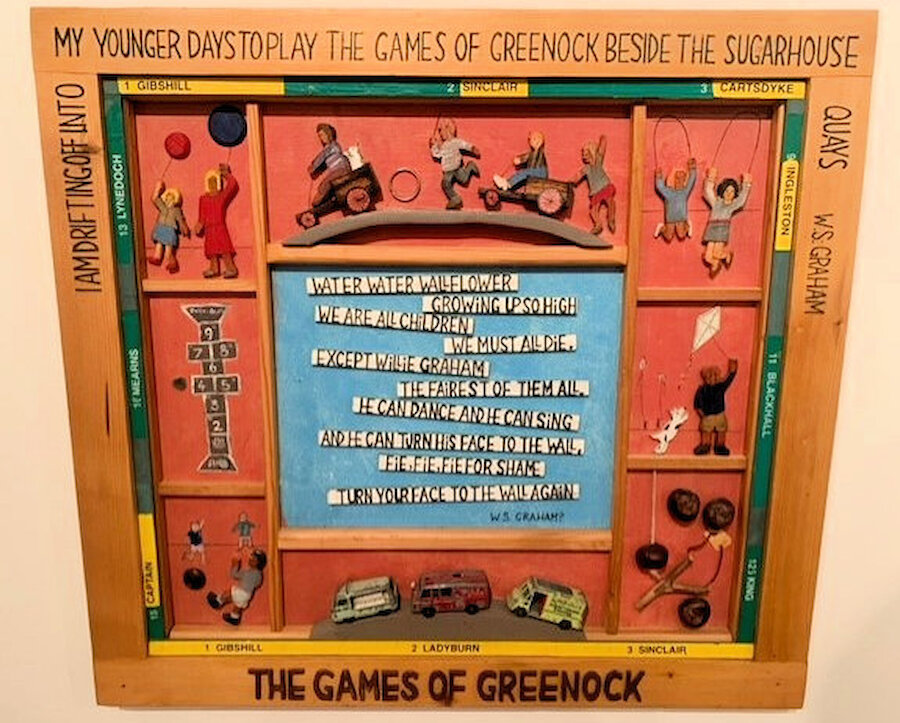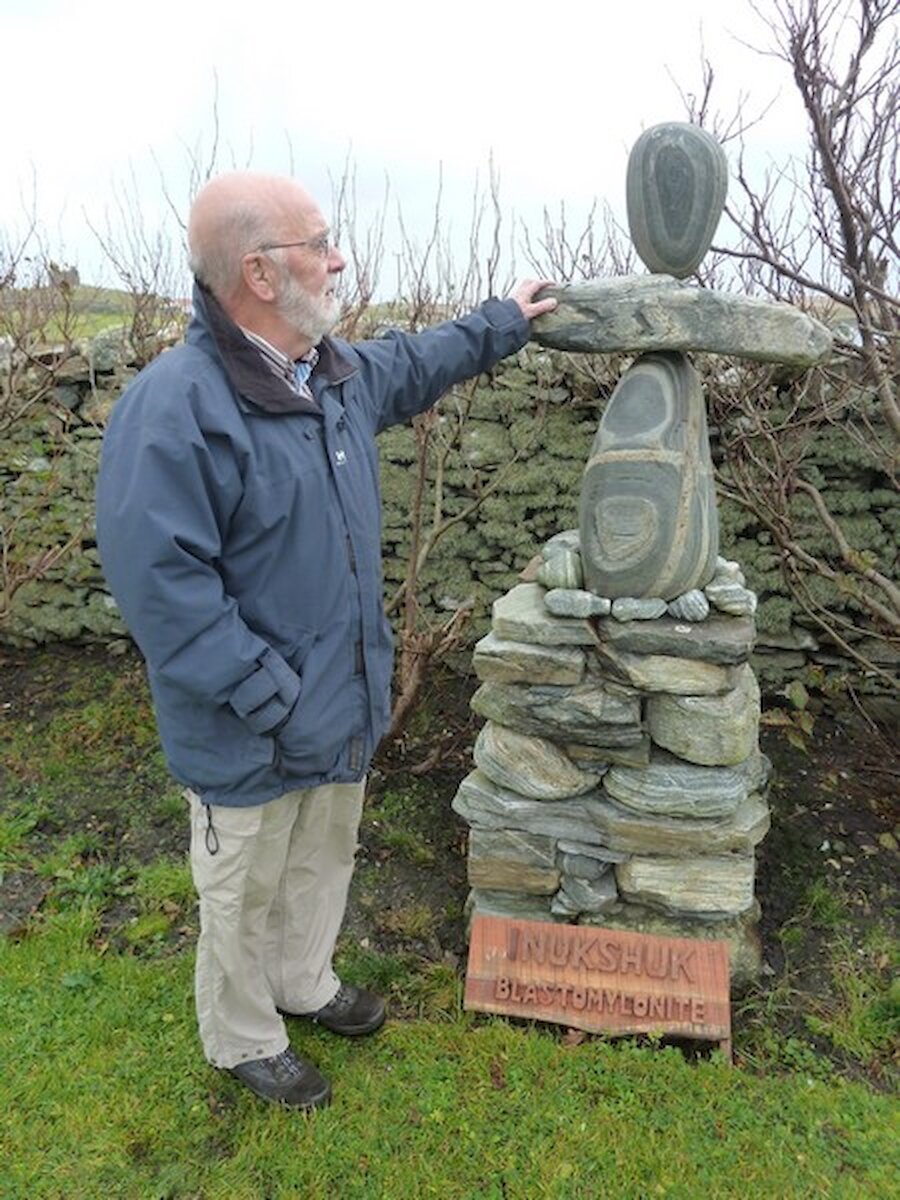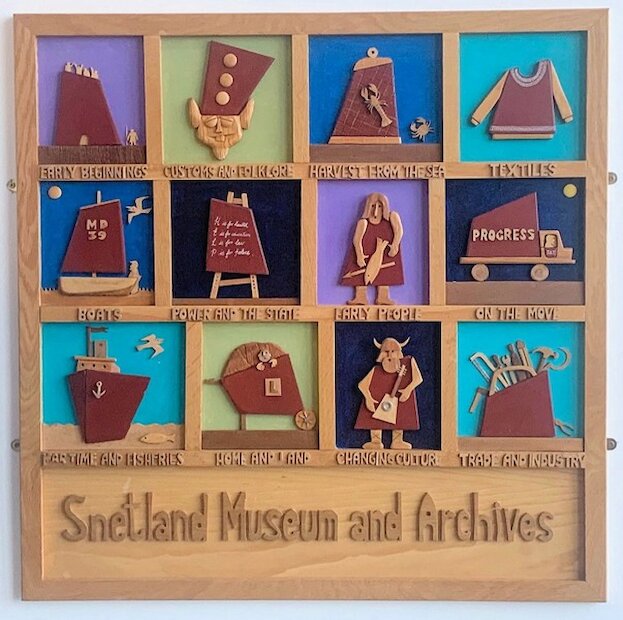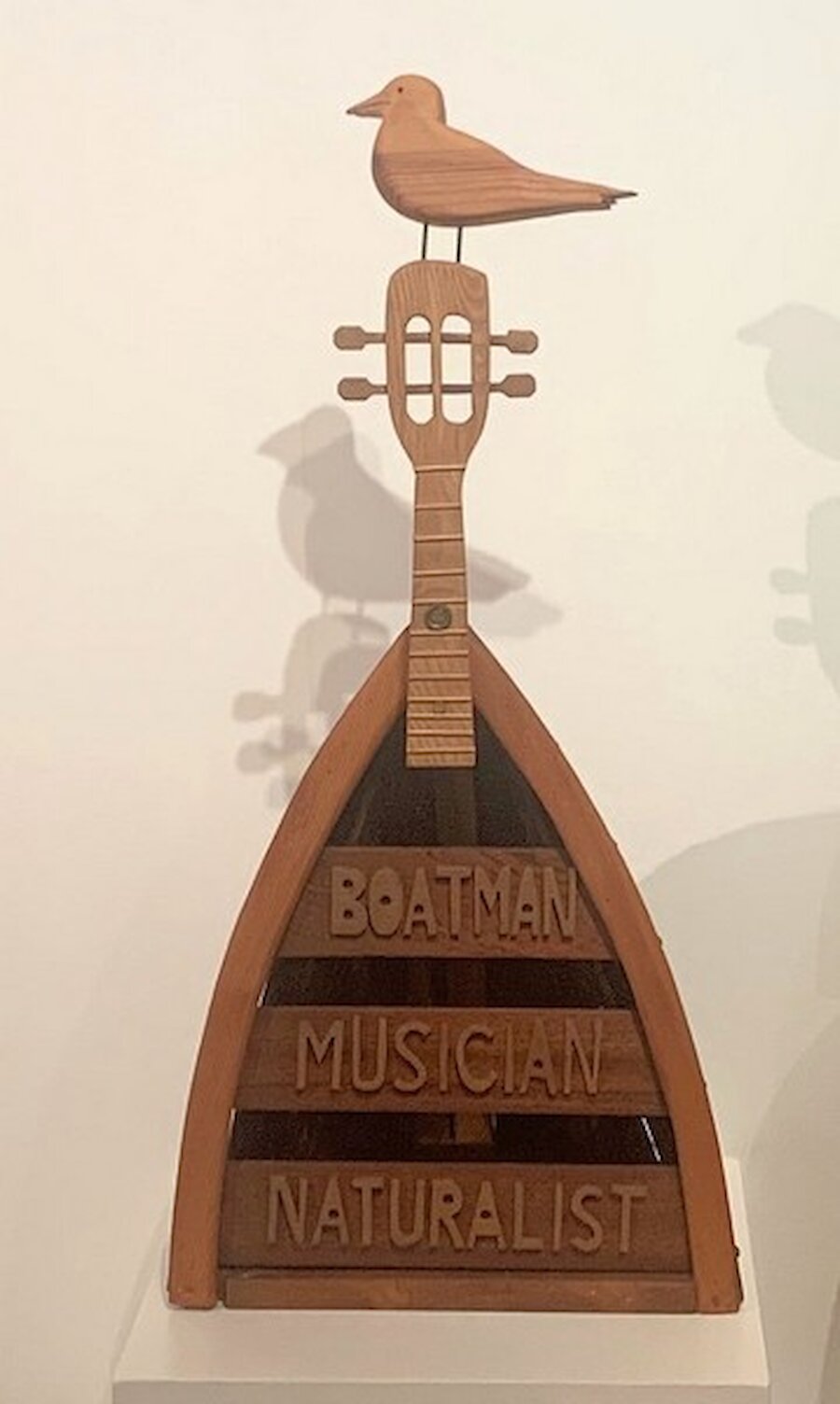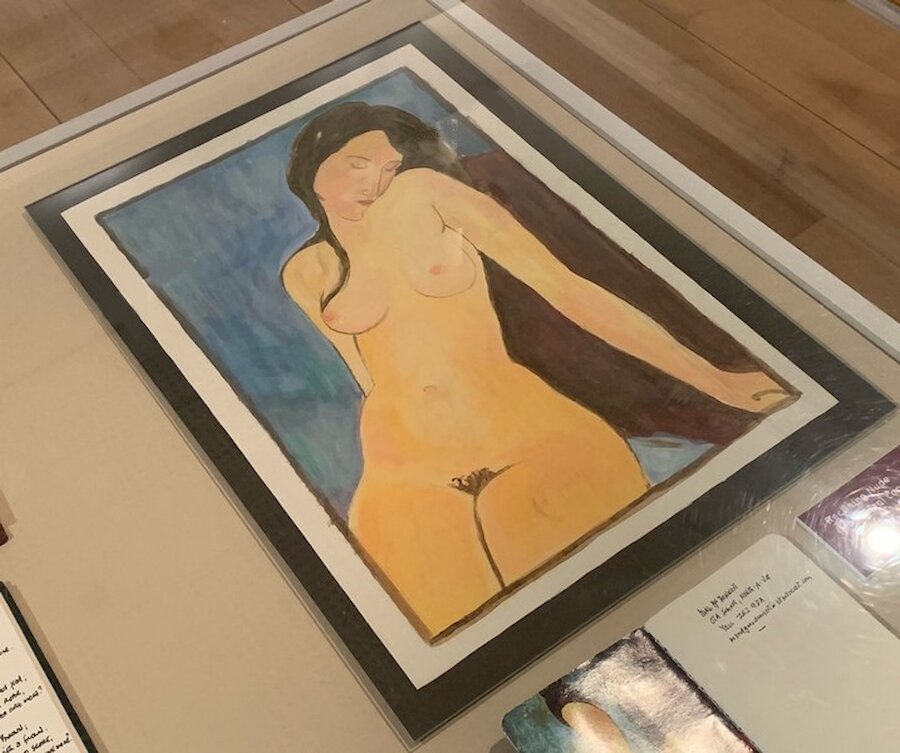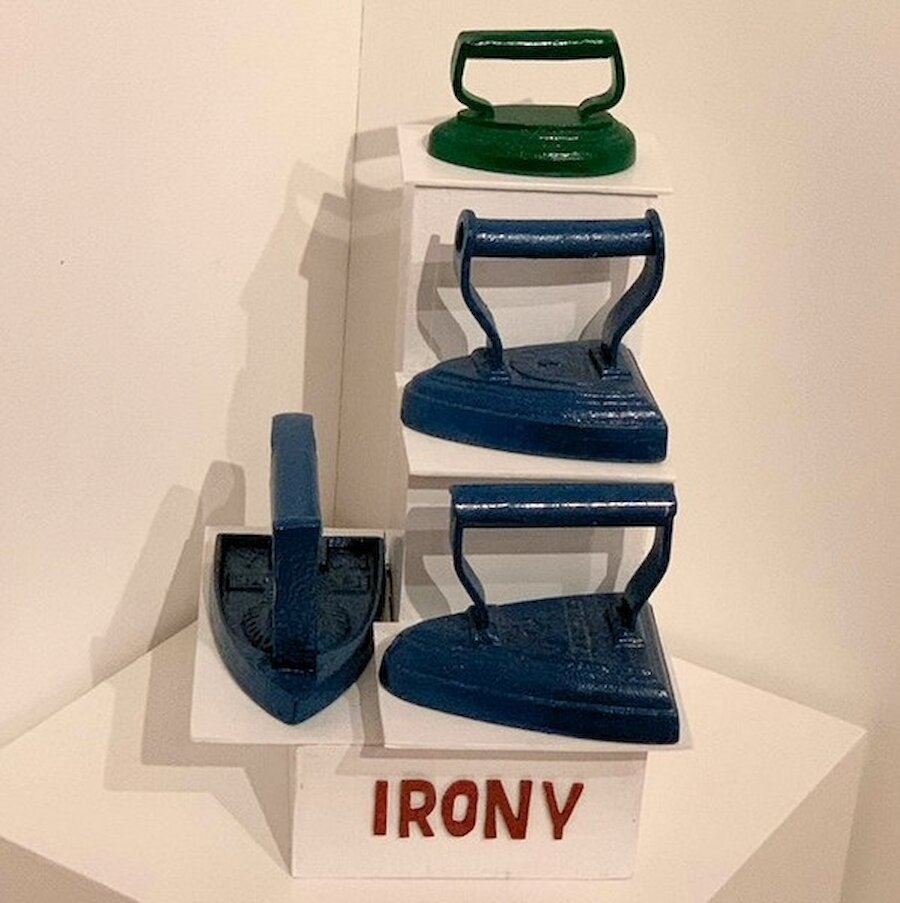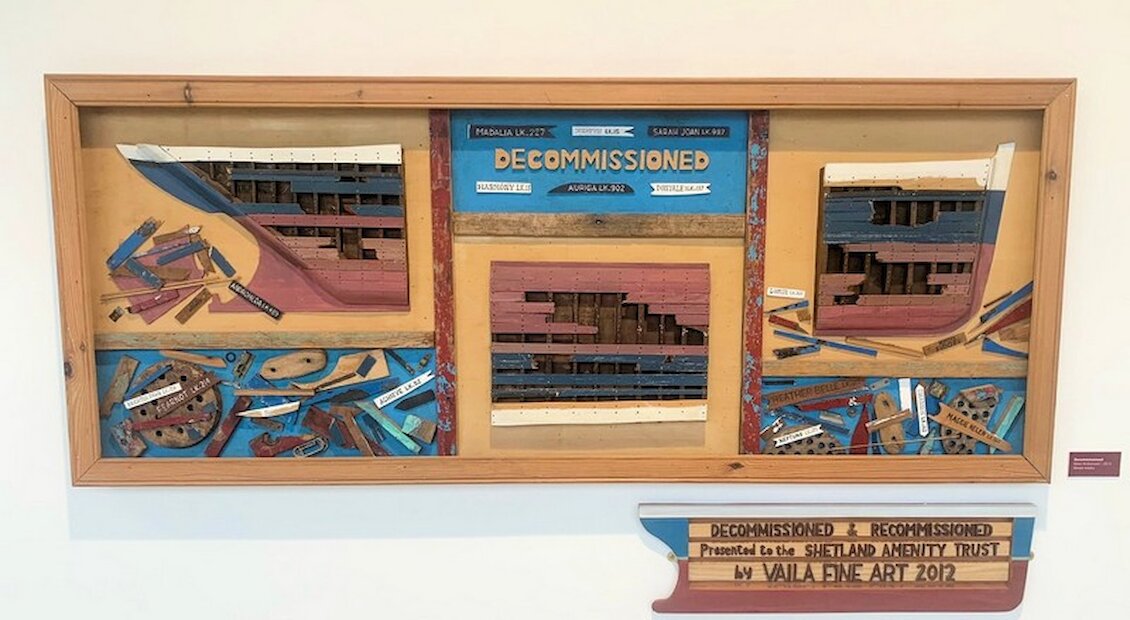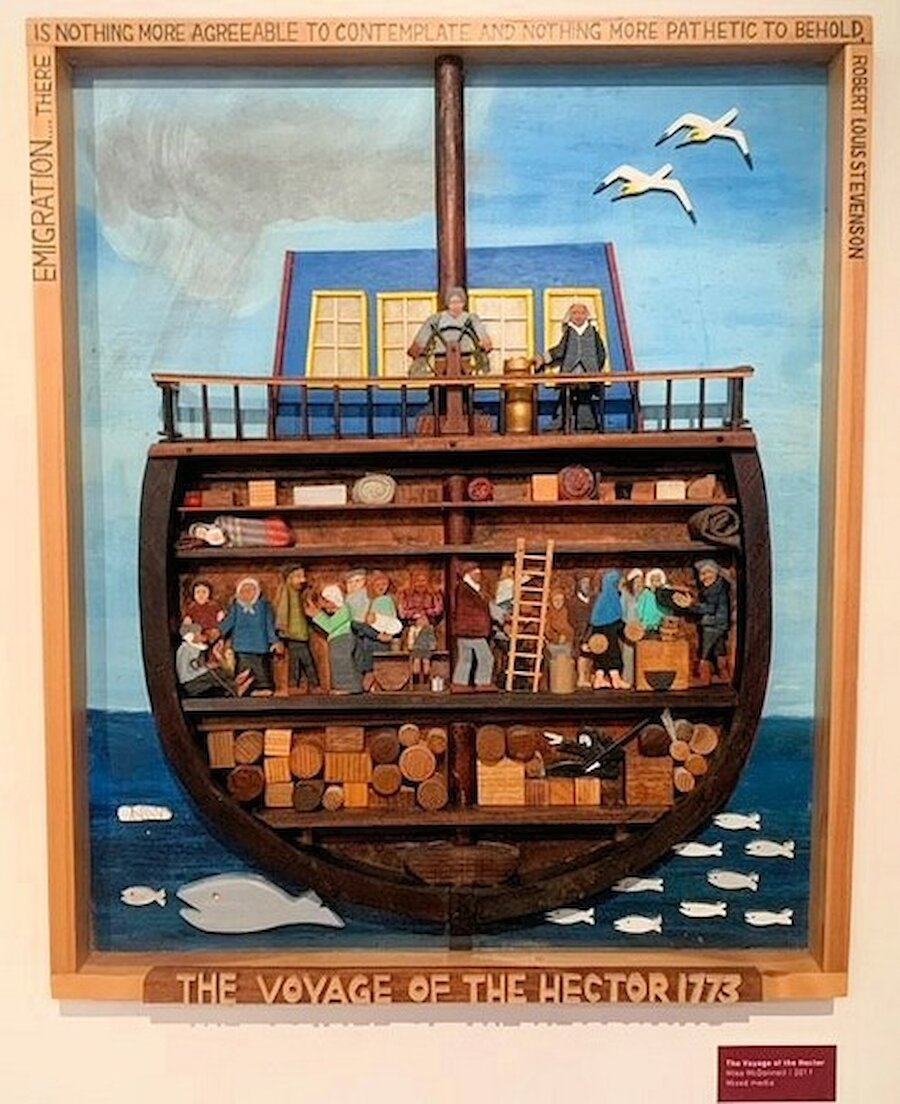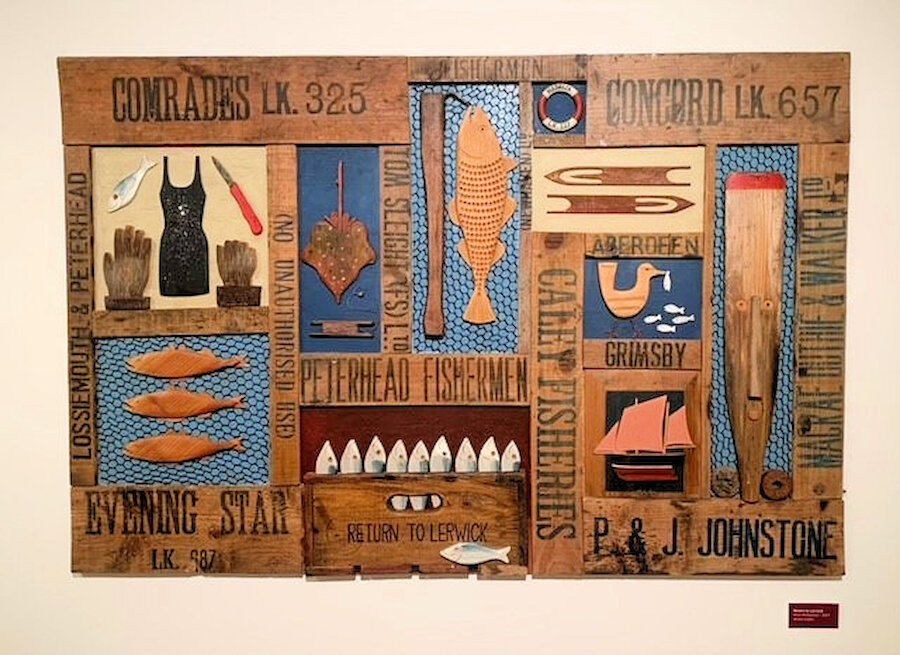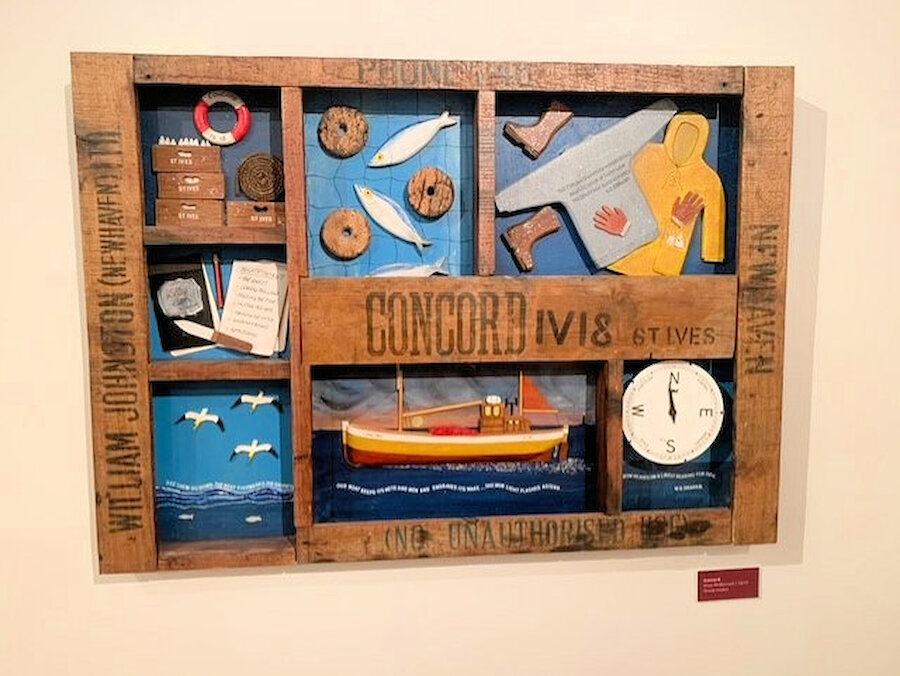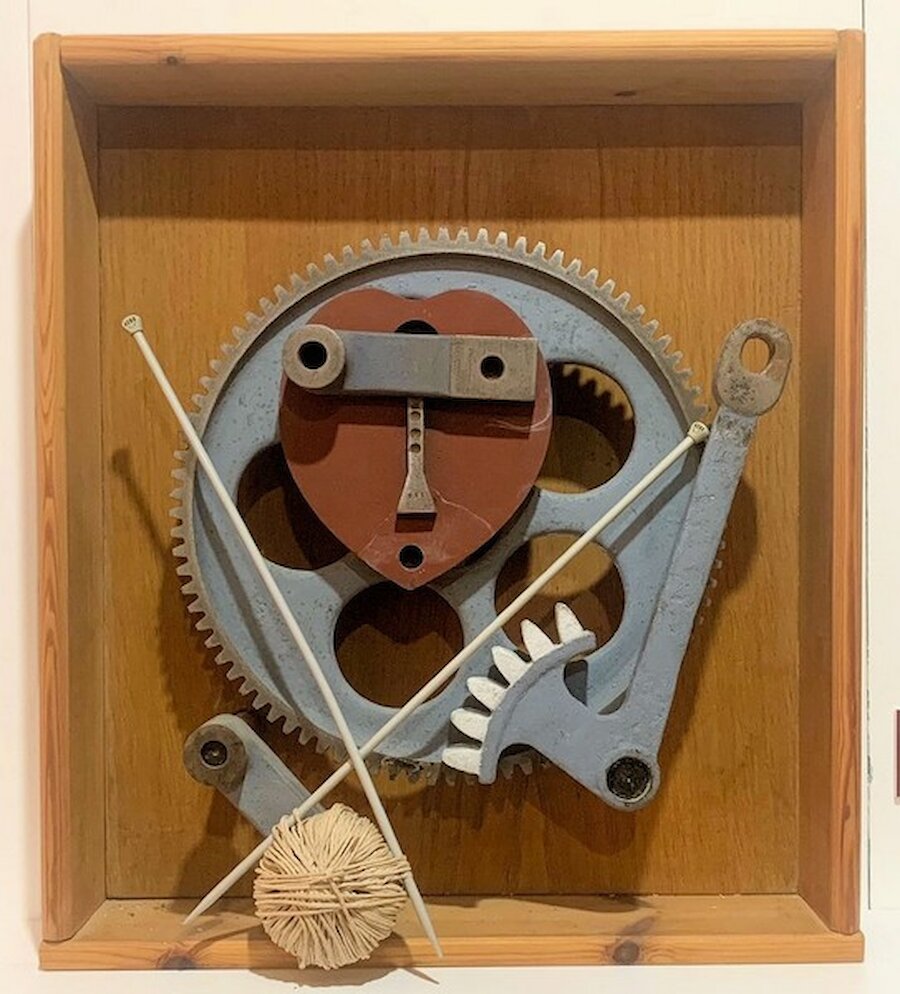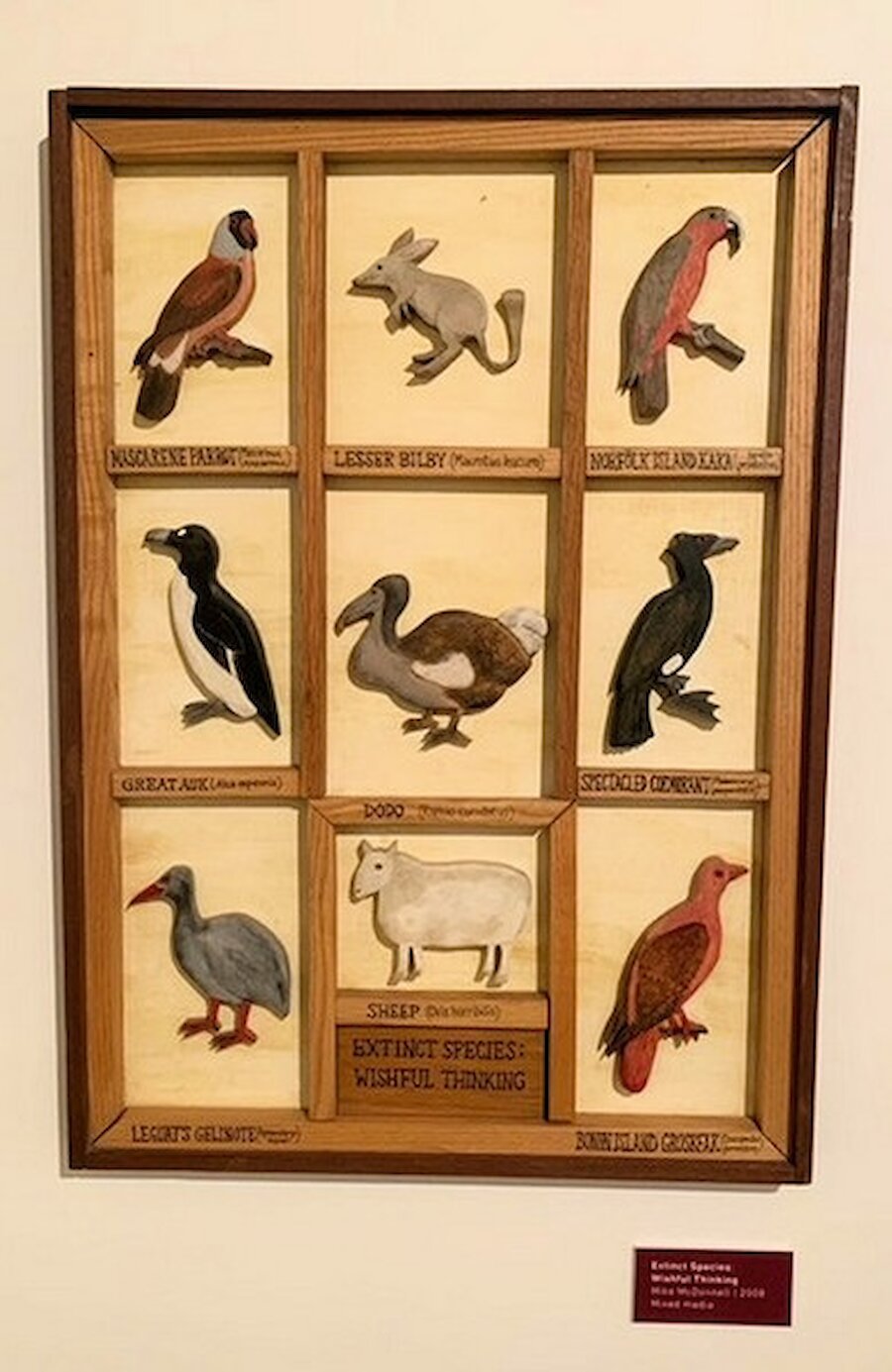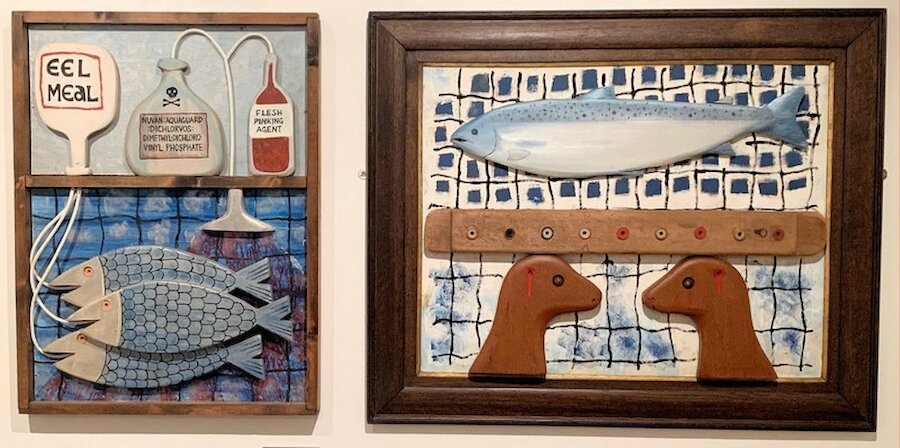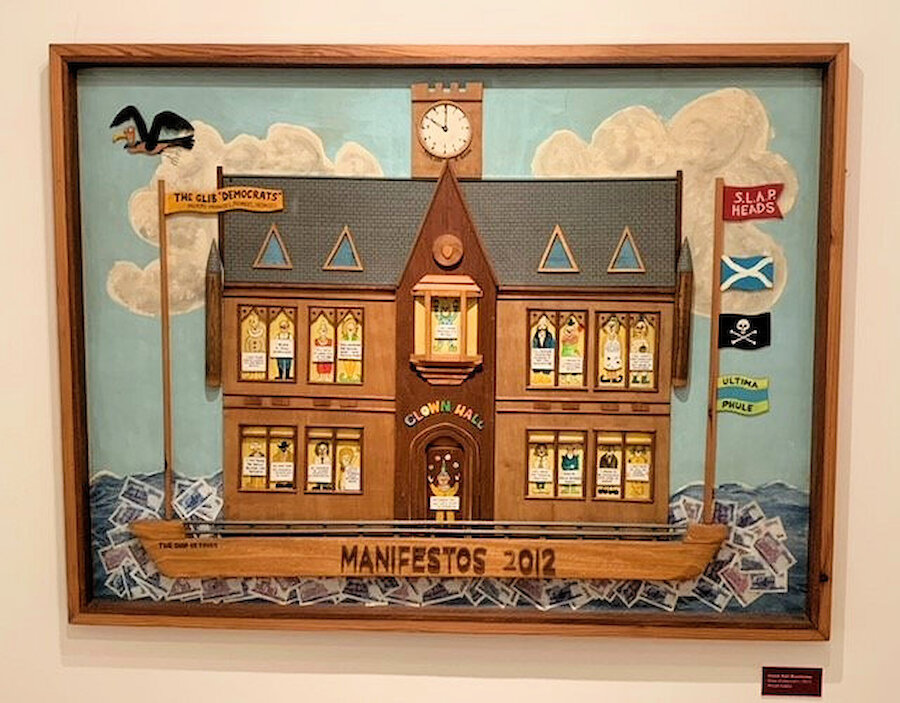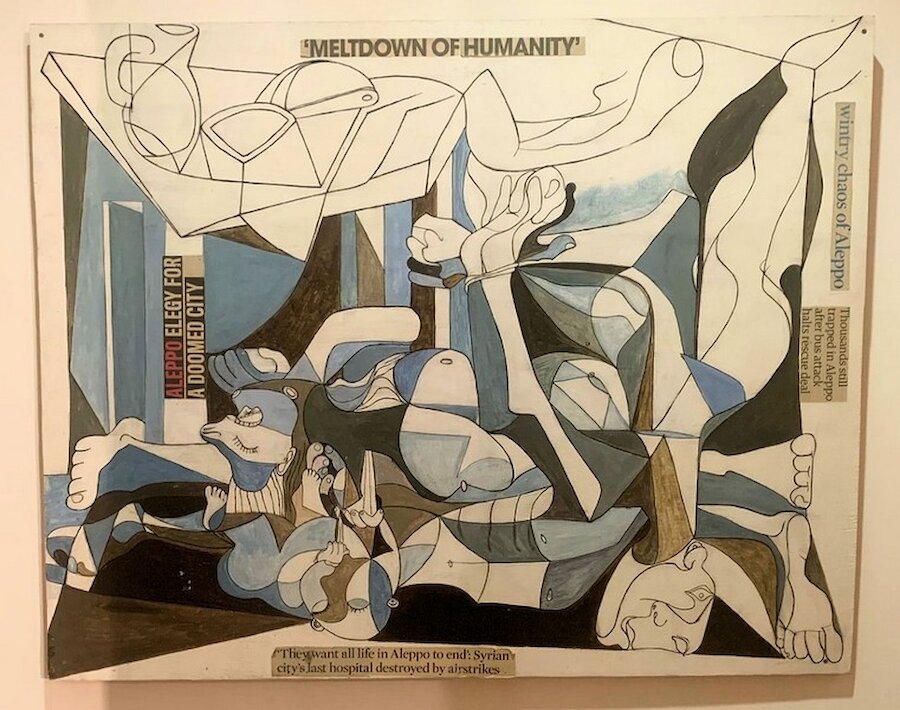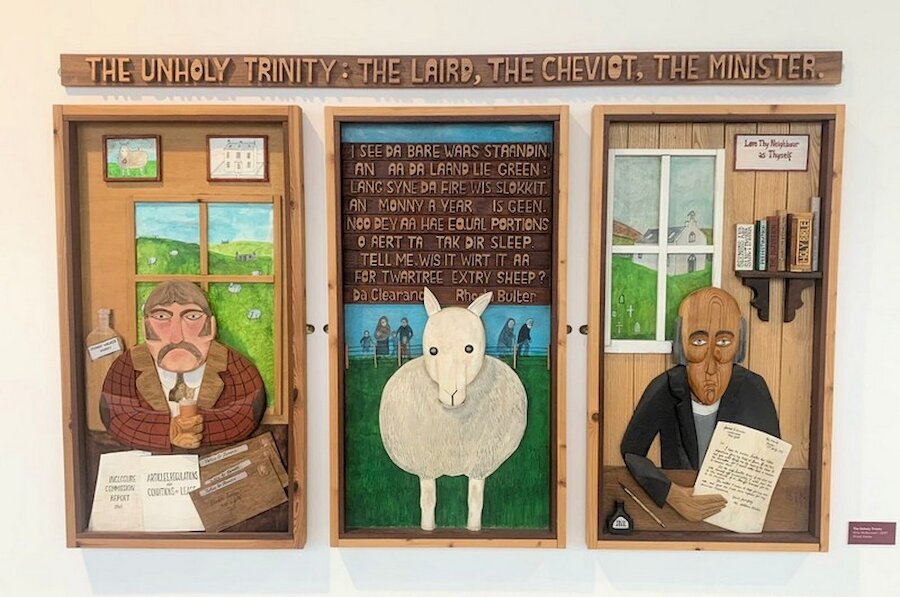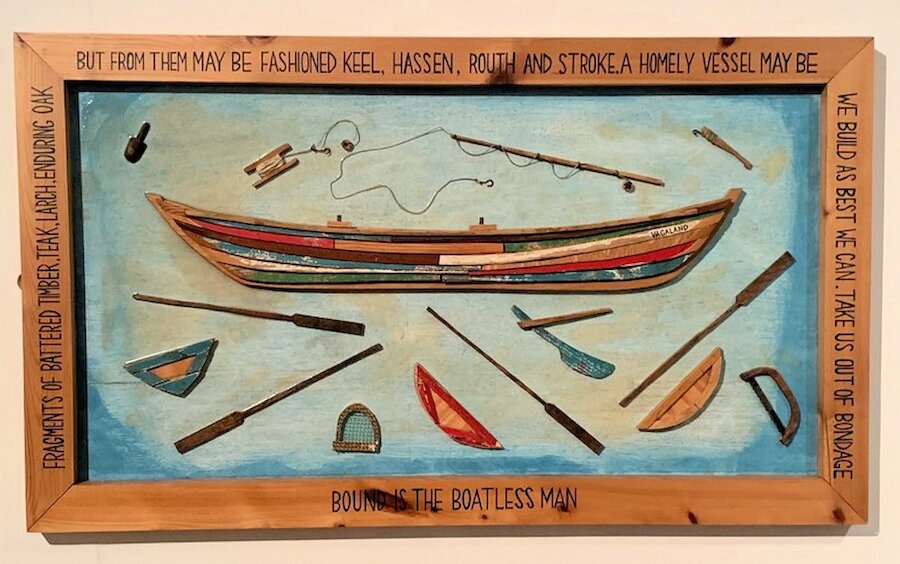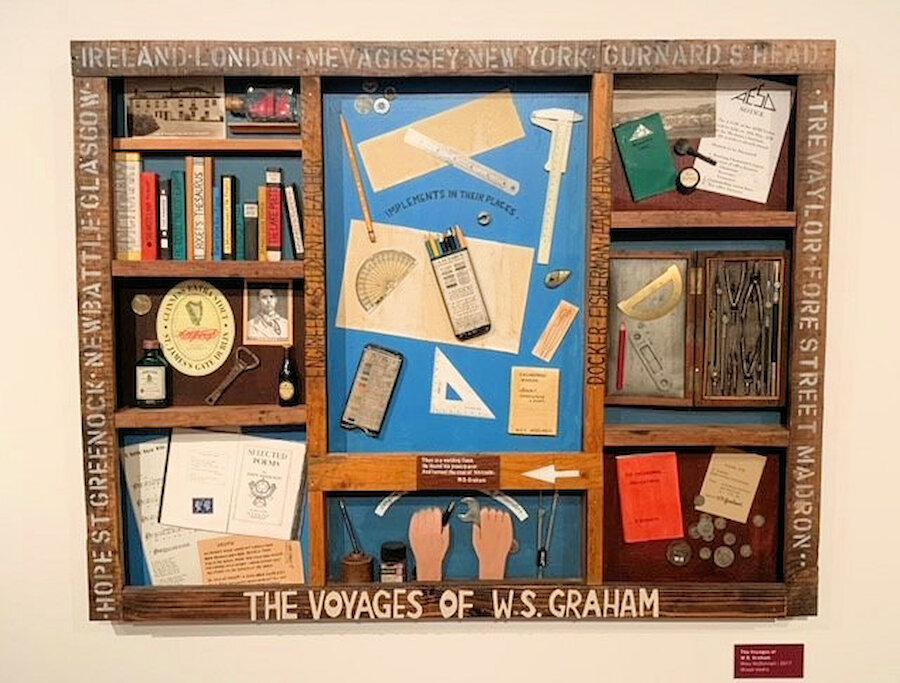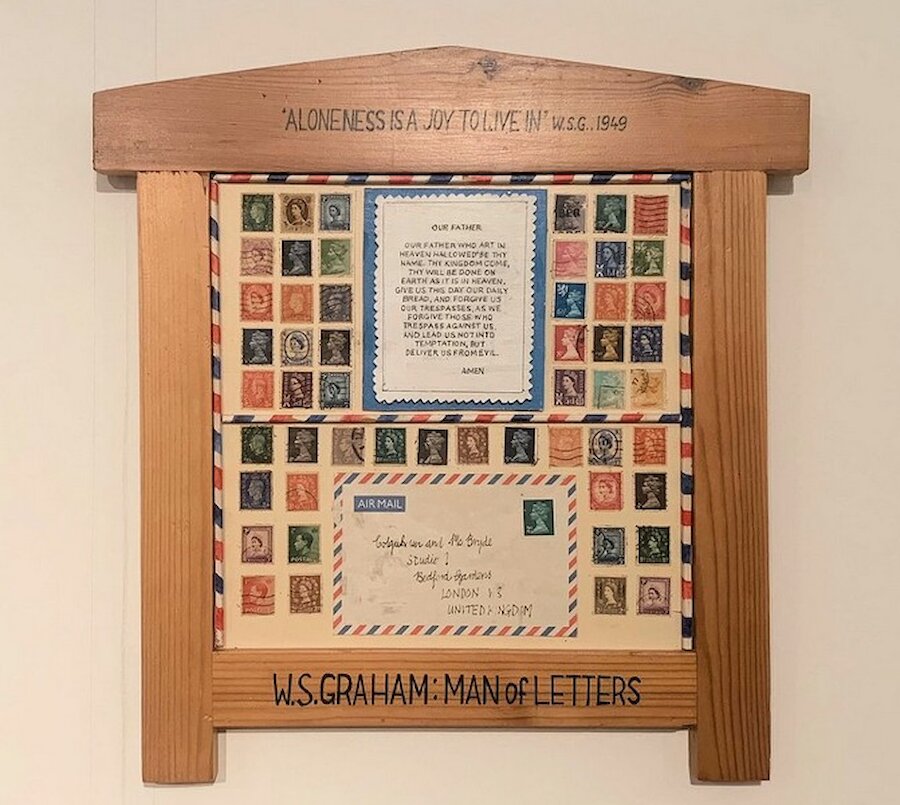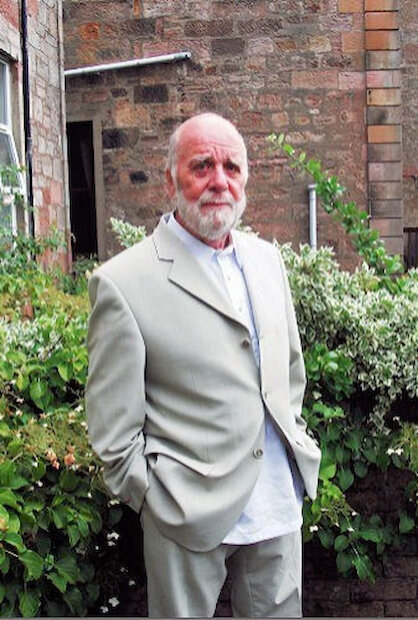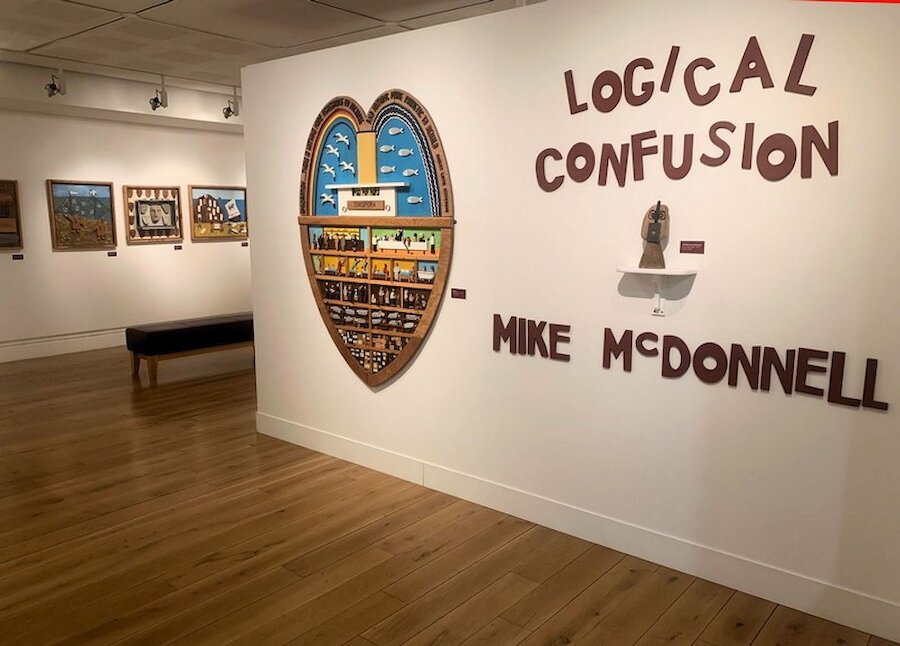Mike’s friend, Dr Jonathan Wills, has written a superb biography on which I’ve drawn in preparing this article. Jonathan recalls him not only as an artist but also as a “malariologist, ethnologist, kayaker, musician, writer, craftsman, local historian, house builder, scholar, community activist and storyteller extraordinaire.”
Over the years, many people have adopted Shetland as their home and made valuable contributions to the community. One of them was the late Dr Mike McDonnell, who, as well as practising as a GP, was a man of many other talents, not least artistic ones. An exhibition at the Shetland Museum and Archives, which runs until 25 February 2024, offers an engaging insight into his remarkable life and work.
Mike was born in Greenock in 1939. He studied medicine at Glasgow University and, later, tropical medicine at Liverpool. He and his wife Gill (whom, Jonathan records, he’d wooed with flowers acquired from the hospital garden) set off to the Solomon Islands. There, as a junior medical officer, he ranged across the archipelago and absorbed its culture, its music, and its art. The couple had their first two (of four) children there.
Mike returned to Greenock to work as a GP in 1971. He found himself drawn into fighting the poverty, poor diet and substandard housing which blighted parts of the town. His approach didn’t endear itself to his practice partners and in 1973, building on his Solomon Islands experience, he applied for the GP post serving two of Shetland’s northern islands, Yell and Fetlar. He practised in that role until 1998.
Throwing himself into both his work and the life of the community, Mike persuaded the health authorities to let him train rural GPs in Yell. However, he was also busy with local campaigns to support jobs and the local economy or improving local transport links.
The interest in art and craft that had flourished when he was in the Solomon Islands was so strong that, by the time he retired, it had become a second career. What’s also clear is that Mike’s commitment to others, the foundation of his medical career, was just as profound in his promotion of arts. He organised art classes, taught in the local school, encouraged local artists and was instrumental in creating the museum and gallery at the Old Haa in Burravoe.
When Queen Sonja of Norway and the then Duke and Duchess of Rothesay (now King Charles III and Queen Camilla) unveiled a commemorative plaque at the new Shetland Museum and Archives in 2007, it was Mike’s superb bronze design that they admired. It uses the museum’s logo, based on the mainsail of the restored fishing vessel, Swan, to create (among other things) a broch, a lorry’s load, a wheelbarrow and a Viking’s tunic.
The bronze version is permanently mounted next to the museum entrance and a wooden version is shown in the entrance lobby.
After the loss of his beloved Gill to cancer in 2011, Mike absorbed himself in creating even more work, collaborating, too, in school projects. With Jonathan Wills, he co-edited Bobby the Birdman, a tribute to the celebrated Bobby Tulloch, renowned ornithologist and boatman. Mike’s memorial to Bobby is included in the exhibition.
As we’ll see, Mike’s interests were wide-ranging, and the exhibition picks up a number of themes. His fascination with the sea and ships is obvious, and fishing is an important element in that. His commitment to the environment is reflected in both subject matter and the recycling of found materials. His pieces often touch on local and international politics. Music and poetry were also at the heart of his work. Often, an exhibit draws on two or more of these inspirations.
Ships and fishing
That love of ships and the sea looms large and there are vessels of all shapes and sizes. The recently-restored Maggie Helen (or Loki as she was known for some time) is represented at large scale in two works.
But equally impressive are the striking, cross-sectional ship interiors. The rendering of two emigrant ships, one of them The Voyage of the Hector 1773, shown above, demonstrates a complete mastery of craft skills.
From even a cursory glance at the exhibits, Mike’s commitment to recycling is clear. Almost all his work relies to some extent on found objects, such as timber or plastic washed up on the beach, or discarded metal, as in The Knitter. He also collected scrap wood from friends’ workshops. The frames, too, were mostly constructed from discarded wood.
The pierces represented here are only a fraction of Mike McDonnell’s prodigious output. The exhibition contains many more and Jonathan Wills’ book illustrates other examples. No-one can be left in any doubt of Mike’s extraordinary energy and creative imagination. His commitment to the arts and music is obvious, and so is his lifelong compassion for the downtrodden, under-privileged and war-torn. We also recall his unyielding commitment to public and community service.
But those of us who were lucky enough to know him remember, too, his personal warmth, sparkle, and good humour, which he brought to everything he did. My own memories include his kindness when my daughters, a colleague and I were stormbound in Yell and he took us in.
Mike’s work was recognised as special and it’s telling that numerous pieces were bought as soon as the exhibition opened, reflecting the popularity of his approach and, for many, its sentimental value. The pieces will have pride of place in people’s homes for folk to enjoy and won’t be locked away.
Had it not been for complications following a heart operation, which led to his death in January 2022, Mike would surely have had more to give. Another of his projects, a Men’s Shed for Yell, was almost complete when he passed away.
It was the end of a truly remarkable life, but his legacy remains.
Logical Confusion: the artistry of Mike McDonnell, by Jonathan Wills, is published by Bressabooks, ISBN 9798862395808. It can be ordered online from the Shetland Heritage Shop. Also available from the shop are the exhibition catalogue, postcards featuring Mike’s work, a coaster depicting the museum plaque and a gift bundle containing all these items.
You can find an extract from Jonathan's book, together with a selection of images, on the art.scot website.
Images in this article are credited to the photographers concerned or to Shetland Museum and Archives. Copyright in the artistic works illustrated is held by the Estate of Michael W. McDonnell.


